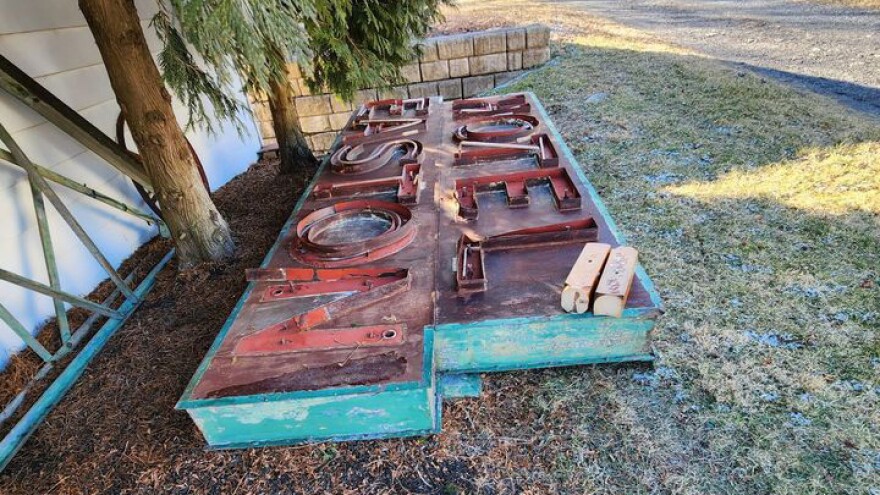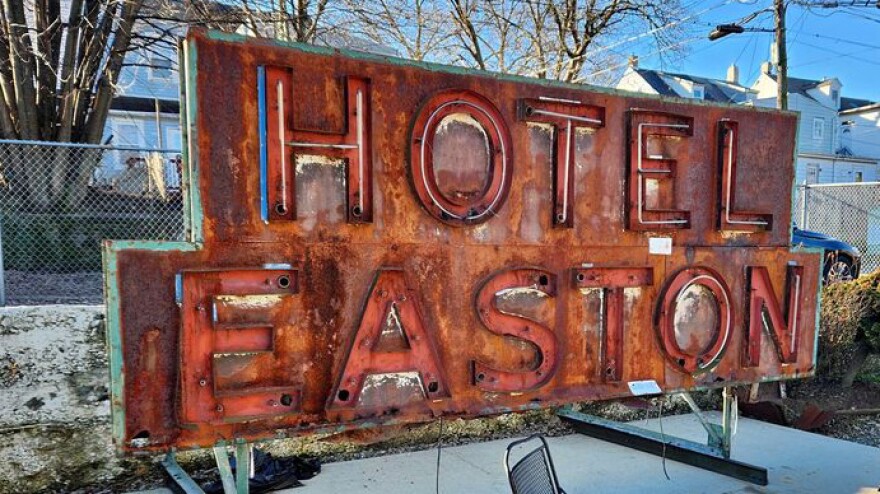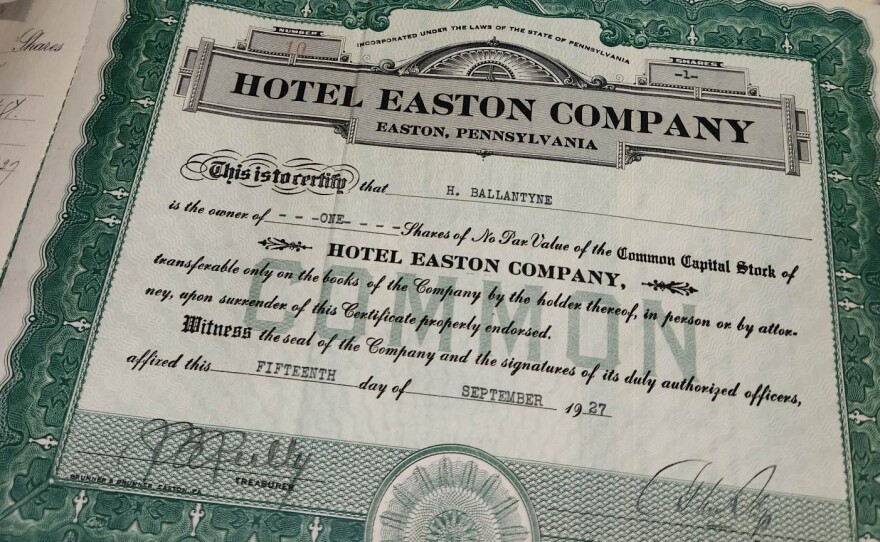EASTON, Pa. — It seems reasonable to assume that anyone with a background in antiquing stands a fair chance of getting his or her hands on a piece of local history, should the right opportunity present itself.
In those rare moments, some dealers will come across stuff they can’t believe actually has a price tag.
That’s what recently happened to Tony Melillo, a small antique dealer who typically buys at online auctions and flea markets and resells the items.
- Roseto resident Tony Melillo came across an online auction of items that were part of a cache of architectural salvage
- The auction lot included two signs that once sat atop the Hotel Easton
- The hotel opened on February 10, 1927, and the signs are a part of the Lehigh Valley's heritage
Browsing an online auction recently, Melillo came across items being stored at an Easton warehouse that were part of a cache of architectural salvage.
Among the listings were two massive signs — each more than 13 feet long and more than 5 feet tall — that once sat atop the former Hotel Easton, a crown jewel of the downtown area in the early 20th century.
“I saw the signs and I’m like, 'Wow, that’s really cool,’” Melillo said. “I live in Roseto [a small borough in Northampton County] and I’m not originally from the area, but I used to come to Easton when I was a kid to see my aunt and uncle. So I thought they’d be really cool to have.”
But one downside of online auctions — where folks like Melillo are finding treasures certain to capture the attention of local history buffs — is not being able to inspect things with your own eyes.
“I didn't really read the description fully, and when I got there to pick them up, you know, they were way bigger than I thought,” Mellilo said with a laugh.
“I threw them on [Facebook] Marketplace real quick, because one was laying in my driveway … I thought these were something I could handle myself and they're a little larger than I thought.
"In a panic, I had to have a friend come and help me get them at least here [to Roseto], and so I put them up on Marketplace. I was going to put them on eBay, but I figured I'd like to see them go local.”
And so the signs that once beckoned thousands of visitors to the city at the confluence of the Delaware and Lehigh rivers were eagerly snatched up.
“It was more that I don't have a big area for my work," Melillo said. "I kind of work out of my house and I run a small little storage garage, and I have my garage.
“So I just kind of buy and turn stuff over. But these were just too big to hold on to. I made a few dollars. Not much, because there's just the panic of, ‘What am I going to do [with the signs in the yard] if it snows?'"

A landmark hotel
The architectural firm of Thomas, Martin & Kirkpatrick, headquartered in Philadelphia, was behind the design of the glamorous Hotel Easton. The building at 140 Northampton St. opened its doors on Feb. 10, 1927, welcoming hundreds of local residents to a grand celebration.
The splendor of the hotel reportedly drew notable guests, including Eleanor Roosevelt and professional boxer Jack Dempsey. It also was host for political events, and John F. Kennedy served as a keynote speaker at the Easton City Democratic Committee dinner there on Oct. 30, 1957, when he was a U.S. senator.
The Hotel Easton signs remained atop the building for many decades, even as the property fell into hard times a half century after its opening.
“It’s a shame it deteriorated because you could probably see those signs from any hilltop, or within so many miles of that building rising,” Melillo said.
In 1990, Hotel Easton was unceremoniously shuttered in bankruptcy as the city and the region were in swift decline. Reports say unfinished drinks were left on the bar and unmade beds were left behind.
The property sat abandoned for years, and the signs oxidized and the bottoms rotted out. Eventually, they were stripped from the exterior of what would ultimately become the Grand Eastonian Hotel & Suites.
The building reopened in 2008, and today it’s a full-fledged gathering place for weddings, events and corporate meetings.
“It’s a shame it deteriorated because you could probably see those signs from any hilltop, or within so many miles of that building rising."Tony Melillo
'Kind of iconic'
Melillo said he doesn’t know for sure what will become of the Hotel Easton signs, which are a small part of the Lehigh Valley’s heritage.
He said one buyer was a local businessman who collects signs and bought it for himself to hang up. Another was an antique dealer from New Jersey who grew up in the area.
“It was kind of interesting to him to have. Who knows what he’ll do with it, but he just had to have it for now at least,” Melillo said while excitedly describing other pieces of local history he’s acquired at auction.
“I got three books of stock certificates from the Hotel Easton, from the 1920s, I think up to the 50s. I also got a little bronze plaque from the flood of ‘55 (describing a high-water mark from historic flooding following Hurricane Diane).”
Melillo also bought an old street sign from the area of Pine and South 14th streets in Easton’s West Ward.
“There's websites and advertising for auctions,” Melillo said. “There’s AuctionZip, which a lot of auction houses advertise. You can look through the calendar and you can see who's local, and who's got an auction going today, or for the next week, and see what's in the area."
Melillo said the auctions usually have a small description and some pictures, but buyers don’t really know the true condition of the items. It’s the way more auctions have been run since the pandemic, moving away from in-person events and holding a lot more online.
“I could have waited and, you know, strung [the Marketplace sale] out for a while," Melillo said. "But this is basically all I do and the signs were just so cool.
“You don't find, you know, these type of signs… especially something like this that’s kind of iconic.”





